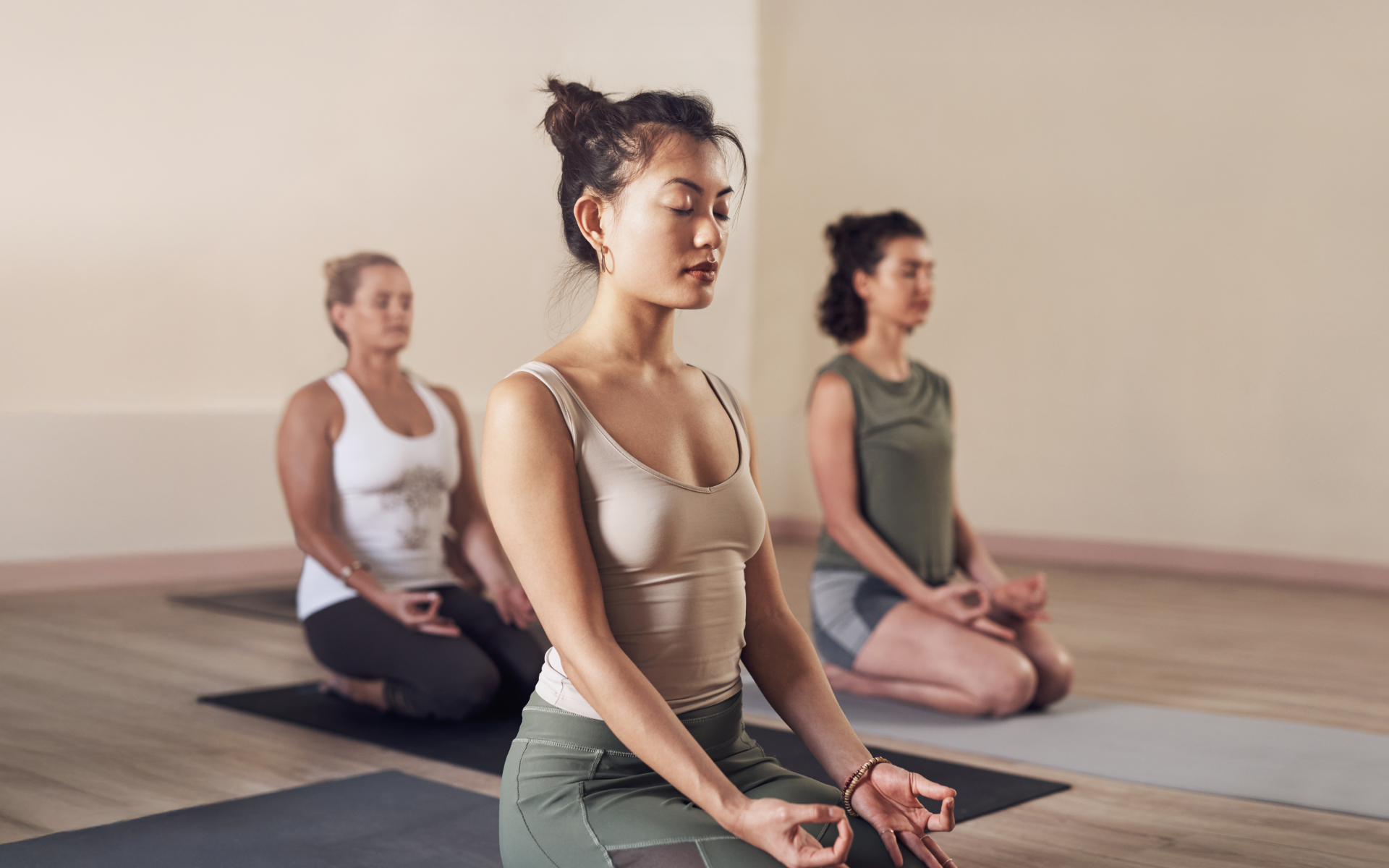Our minds and bodies are fully connected. While we may think trauma is only experienced in our emotions, it can actually present itself in our bodies too. In fact, many people feel physical symptoms that link back to stress and trauma.
When we go through something traumatizing, our bodies go into “fight or flight” mode, which creates physical stress in the body and can stay with us and get “trapped” in our “body memory” (1). This provides ongoing feedback to the mind that the crisis is continuing and can lead to chronic pain and emotional suffering.
Somatic therapy, which is also known as body-centered therapy, is a holistic approach that recognizes the interconnectedness of the mind and body (2). Somatic exercises can benefit us physically, mentally, and emotionally as we use them to release tension from past trauma mindfully and compassionately, which lessens the power they hold on us in the present day.
Not only can these techniques help release the emotional aftereffects of trauma, they can also help with chronic pain, mobility, and flexibility.
What Are Somatic Exercises?
Somatic exercises engage the body gently, slowly, and mindfully. While this can be done in a number of ways (1), there are a few specific techniques with an established track record of research (3, 4, 5), but we’ll keep it general for this article.
The deliberate, guided movements allow us to tune into body sensations as we do them, which helps us identify where we’re physically holding our stress. By identifying these areas, somatic exercises focus on improving body awareness, reducing physical tension, giving us insight into our symptoms, and enhancing overall well-being.
Perhaps you’re skeptical about somatic exercises—they may sound too good to be true. However, there’s evidence that they truly are effective. Let’s take a look at whether or not they actually work.
Do Somatic Workouts Really Release Emotions?
Here’s the thing about emotions: we don’t just keep them pent-up in our minds; we also store them in our bodies. The theory is that our body holds and expresses experiences and emotions and traumatic events or unresolved emotional issues can become “trapped” inside. Feelings that result from past trauma such as anger, anxiety, and grief can contribute to a number of physical complaints and make living in the here and now difficult (1).
This approach explores how the body expresses deeply painful experiences, applying mind-body healing to help with trauma recovery. It’s common for somatic therapists to combine body work with other treatment methods, such as cognitive processing therapy, prolonged exposure, or eye movement desensitization and reprocessing (EMDR) therapy (1).
As emotions are very closely linked to the mind and body, when we engage in somatic exercise movements, we release tension from our bodies and unlock stored emotions. As a result, this may fan the emotional flames, which is why it’s recommended that people with significant trauma histories do this type of therapy with the help of a trained provider (3).
Something tells us you often forget to put all the everyday hustle and bustle on hold and simply concentrate on yourself. It’s time to straighten out your priorities! Take a moment to heal , process your emotions, ground yourself, release all the pent-up tension and recharge with the BetterMe: Meditation & Sleep app before getting back into the race of life!
Are Somatic Exercises Evidence-Based?
As practitioners may combine somatic exercises with other mental health-related approaches, it can complicate scientific studies, which makes it difficult to tease apart which aspects are most helpful.
However, there is a growing body of research that demonstrates that it’s effective for specific things such as pain (6,7). Other studies appear optimistic, as it appears somatic exercises may have additional benefits (8), including physical flexibility, mobility, and mental health symptoms (3). While we wait for further high-quality research to strengthen the evidence base, it doesn’t hurt to get more in tune with your body and emotions, and the gentle movements of somatic techniques make them a fairly low-risk option for people of all ages and mobility levels.
Read more: Somatic Healing Techniques: A Holistic Approach to Physical and Emotional Recovery
Benefits of Somatic Exercises
There are quite a few benefits to somatic movements, but a few stand out in the research:
Decreased Chronic Pain and Improved Mood
Some people with trauma histories enter into a state of “guarding” their emotions as well as bodies. When we’re talking about physically “guarding”, we mean maintaining elevated muscle tension or altering the way we move. Letting go of it can be scary as it can make us feel vulnerable. Holding on to this tension can create a sense of safety, but pain often results.
Somatic exercises can help you manage chronic pain by keeping you focused on the mind-body connection as a whole. By doing this, you learn from the pain signals and discomfort, and also your reactions to them, as you move. While this may sound unpleasant, it helps us reframe the experience of pain, identify our fears, and find ways to work through it. The result is it can either make the pain more tolerable or actually decrease its intensity (7).
Although research is still growing, there is promising evidence that a specific type of somatic exercise called “Somatic Experiencing” may reduce anxiety, depression, and other trauma-related symptoms (3).
Increased Flexibility and Mobility
The physical benefits of somatic exercises also include flexibility, balance, and increased mobility. This comes from paying close mental attention to what your body is doing and telling you, which helps you strengthen your balance and move more easily.
It’s believed that people who do somatic movements regularly can also see improvements in posture, flexibility, and mental focus, which significantly reduces the risk of injury while promoting healthy aging (4).
Weight Loss
While we’re on the subject of controlled physical movements that require focus and balance, we must mention yoga. In addition to stress management benefits, yoga has been proven to build muscle tone and improve body composition, which contribute to minimizing weight gain over time and helping with weight loss (8). As somatic exercises generally have similar effects, it’s worth considering incorporating a somatic workout into your daily routine.
If you wish to reach into the deep crevices of your mind, take yourself out of the mental loop, regain balance, infuse yourself with optimism, and cultivate compassion – BetterMe: Meditation & Sleep app is exactly what you need!
FAQs
How often should I do somatic exercises?
Somatic exercises should be done every day for approximately 5 to 15 minutes. By doing this, you remind your brain to keep your body flexible and release emotions. In addition, the ideal time for somatic exercises is immediately after waking up in the morning.
Is Pilates a somatic workout?
Somatic workouts vary slightly from Pilates, as somatic movement is a more sensory experience than a mechanical repetition of a traditional Pilates exercise.
What’s the difference between somatic exercises and yoga?
While they’re seemingly similar in terms of movements, there’s a key difference between somatic exercises and yoga. The difference is the mental aspect. Somatic movement encourages you to explore what you feel while in a specific movement, whereas yoga focuses more on centering your attention, balancing, stretching, and strengthening your body.
DISCLAIMER:
This article is intended for general informational purposes only and does not serve to address individual circumstances. It is not a substitute for professional advice or help and should not be relied on for making any kind of decision-making. Any action taken as a direct or indirect result of the information in this article is entirely at your own risk and is your sole responsibility.
BetterMe, its content staff, and its medical advisors accept no responsibility for inaccuracies, errors, misstatements, inconsistencies, or omissions and specifically disclaim any liability, loss or risk, personal, professional or otherwise, which may be incurred as a consequence, directly or indirectly, of the use and/or application of any content.
You should always seek the advice of your physician or other qualified health provider with any questions you may have regarding a medical condition or your specific situation. Never disregard professional medical advice or delay seeking it because of BetterMe content. If you suspect or think you may have a medical emergency, call your doctor.
SOURCES:
- Tracing somatic therapies (2021, thelancet.com)
- What is somatic therapy? (2023, health.harvard.edu)
- Somatic experiencing – effectiveness and key factors of a body-oriented trauma therapy: a scoping literature review – PMC (2021, nih.gov)
- The effect of Alexander technique training program: A qualitative study of ordinary behavior application – PMC (2014, nih.gov)
- Moving with Ease: Feldenkrais Method Classes for People with Osteoarthritis – PMC (nih.gov)
- Somatic Practice and Chronic Pain (2021, Warwick)
- Moving With Pain: What Principles From Somatic Practices Can Offer to People Living With Chronic Pain – PMC (2020, nih.gov)
- A Different Weight Loss Experience: A Qualitative Study Exploring the Behavioral, Physical, and Psychosocial Changes Associated with Yoga That Promote Weight Loss – PMC (2016, nih.gov)









